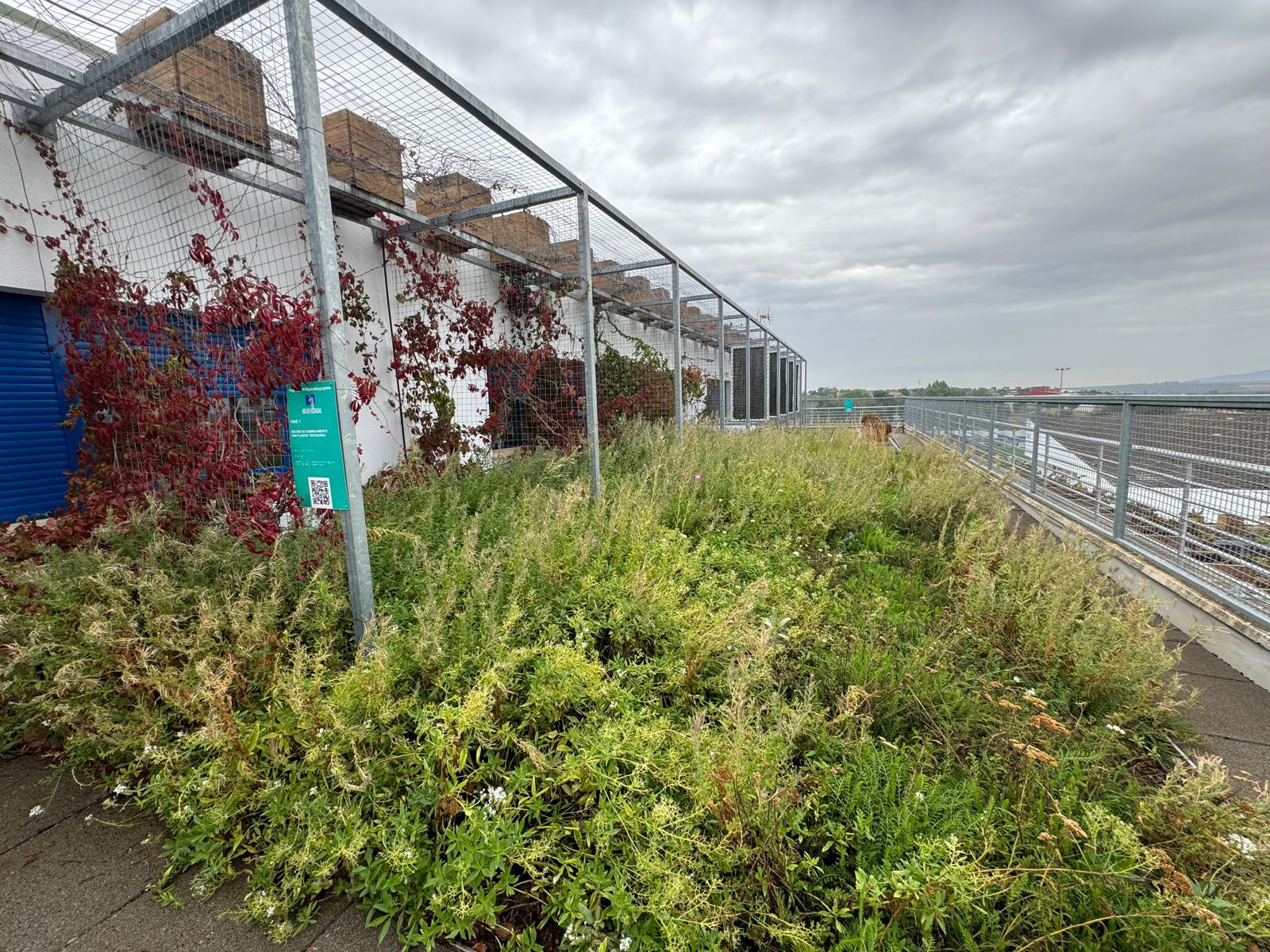The Diputación of Badajoz, through the Ecological Transition Area, together with the Solana de los Barros City Council (Badajoz, Spain), continues with the maintenance of the Nature-Based Solutions (NBS) implemented in the framework of the LIFE-myBUILDINGisGREEN project at the Gabriela Mistral School. The degree of vegetation development of these NBS varies between roofs and facades.
On one hand, the roofs (mBiGCUVE) have adapted perfectly to the conditions and the maintenance carried out, reaching an almost optimal state of development. The temperature reductions on the roof surface are evident, so that inside the building there have been improvements in the comfort of the spaces. In addition, the effect of the roofs has been particularly relevant as they represent the majority of the intervention area in this pilot building.
 mBiGCUVE-SUS, mBiGFAVE and mBiGToldo solutions © Diputación of Badajoz
mBiGCUVE-SUS, mBiGFAVE and mBiGToldo solutions © Diputación of Badajoz
On the other hand, the facade solutions, although they have an initial plant growth, have presented certain complications.
The facade solution with the largest surface area (mBiGFAVE) included virgin vines, which require a flat surface to ‘anchor’ the tendrils. As this is not possible on the installed metal structures, grape vines have been replanted, whose helical branch growth seems to be better anchored to the trellis.
The prototype plant awning (mBiGToldo) has proved to be unviable practically from the outset, as it is very sensitive to any environmental change in the geographical context of the Solana de los Barros environment. The high demand for irrigation, the absence of substrate, the probable defects in the original seedlings, the generation of permanent shade and the lack of resilience of the system lead us to rule out this type of solution as an alternative for adaptation to climate change.
 Different views of mBiGFAVE © Diputación of Badajoz
Different views of mBiGFAVE © Diputación of Badajoz
In the pergolas (mBiGPEVE) installed in the courtyards, whose system is similar to that of mBiGFAVE, the same problem of vegetation growth can be observed. Once the best solutions are identified, they will also be applied to this type of solution.
Finally, the permeable topsoil solutions (mBiGSUVE) and the wooden structure placed in areas of high student occupancy are doing their job perfectly.
By the end of 2024, we will obtain new results from the measurement of indicators in this pilot building, which will provide useful information on the effectiveness of the NBS implemented to reduce temperature and improve rainwater management in this school.
For all news and events related to the LIFE-myBUILDINGisGREEN project, we recommend following the project’s Twitter and LinkedIn channels.









